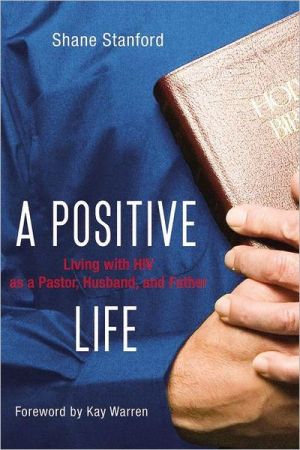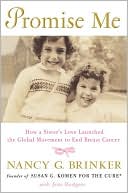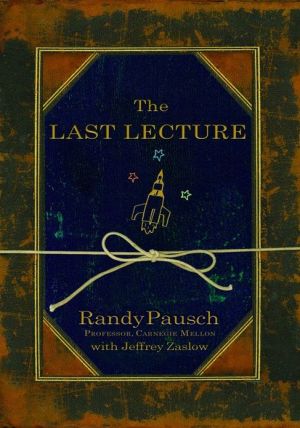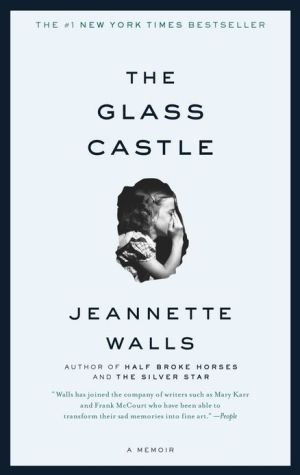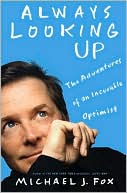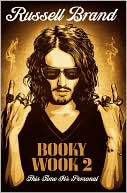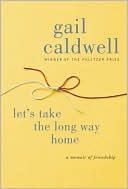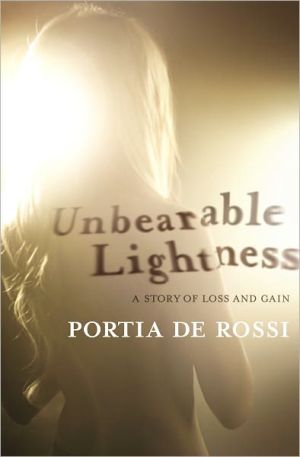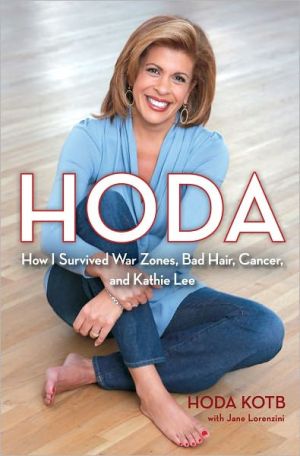A Positive Life: Living with HIV as a Pastor, Husband, and Father
'More than anything, I wanted my life to matter ...'\ When Shane Stanford discovered he was HIV positive twenty years ago, he knew he had a choice: he could feel sorry for himself, or he could live as faith-fully and boldly as possible.\ In A Positive Life, Shane offers nine basic yet powerful lessons for living well, all found within the life and ministry of Jesus. As Shane has discovered, even a difficult road offers glimpses of grace. Choosing how to live out that grace is the key to...
Search in google:
If you want to appreciate life to the fullest, this unabridged audio download of A Positive Life reveals nine basic yet powerful lessons for living with passionate faith and joy. Through his story of living with HIV, Shane Stanford will hlp you find contentment in your own life, no matter the circumstances. Publishers Weekly “I have learned that when life breaks us, we can work to own it before it owns us.” Those words of the author, a United Methodist pastor, ring true in his account of a life spent battling hemophilia, HIV, and accompanying illnesses, as well as debilitating spiritual and emotional challenges. Stanford contracted the disease in the 1980s, when HIV/AIDS was a death sentence. Yet the period was also the start of research and new medicines that kept him alive. Stanford takes readers through his childhood, when he spent much time under the benign mentoring influence of his grandfather; his adolescence, when he was diagnosed and met his future wife; and his struggle to become a pastor despite his HIV-positive status. His story is more than just a battle against prejudice and HIV/AIDS; it's a love story, a tale of forgiveness, a picture of resilience, and a witness to God's grace. Included are a loving afterword by his wife, Pokey Stanford; Stanford's speech at the 2006 Global AIDS Summit; and a nine-lesson study guide. (Apr.)
A Positive Life\ Living with HIV as a Pastor, Husband, and Father \ \ By Shane Stanford \ Zondervan\ Copyright © 2010 Shane Stanford\ All right reserved.\ ISBN: 978-0-310-29292-0 \ \ \ \ Chapter One\ THE DAY BEFORE \ Dear God, Ms. Gandy, my Sunday school teacher, said you said we could ask for anything and that you would listen. I mostly talk to you by praying, but this is important, so I thought I would write it down.... -First journal entry, January 19, 1979\ Trauma changes us. I watched a woman on the news describe the year since she had survived a plane crash in Chicago. She said the event had profoundly changed the way she viewed her world; she spent more time with her family and tried to enjoy the "everydayness" of things. Her relationships, language, and worldview were framed in the context of before the accident and after it.\ "You can't make sense of the whole of your life unless you understand the magnitude of how much changes when the world turns upside down," she said. "You may not remember all of the details or circumstances, but you most certainly know the timeline."\ When we try to understand today, it matters what happened before.\ THE DAYS BEFORE\ Growing up a hemophiliac, I spent a great deal of time in the hospital. Thankfully, my diagnosis was mild by other comparisons, and I onlyneeded medical attention when I was hurt or having a procedure. As most little boys do, I often did things that were either unwise or downright stupid. Although my parents kept me from playing most organized contact sports, I played a lot of backyard football, baseball, basketball, and soccer. Thus, I was always hurt from some shot or lick I took, and I found myself in the emergency room much more often than my mother liked.\ The nurses and doctors at the local emergency room were more than just my caretakers when it came time for Factor VIII (the medicine used to treat the hemophilia); they were my family. Whenever I got hurt, they would stitch me up, give me a dose of Factor, and send me on my way. Because Factor was so expensive and had to be administered through an IV, local emergency rooms became the places for most hemophiliacs to receive their doses, especially the mild ones like me.\ Though I was mild, I saw the nurses on a regular basis. I was always doing something that hemophiliacs (or most children) in general shouldn't do. Once I tried to ramp a parked car on my mountain bike. I made it-halfway. The other half was me rolling off the side of the car and hitting the ground. I also enjoyed building forts, that would, for one reason or another, lead to a nail stuck in my hand or a bruised knee from the rope swing. And I enjoyed sports of any kind. Though I tried to be as careful as possible, I wanted to be as normal as everyone else, which meant taking an elbow to the chin in basketball or a bruised rib in football or tearing ligaments in my ankle chasing a fly ball in baseball. Yes, the nurses saw me on a regular basis, and I took my fair share of scolding and lectures from them about how I should be careful and use "what little of my mind I apparently had" they would say. But I think deep down they liked seeing me. I was always hurt, of course, but I was just a normal boy.\ It was during one of those visits that I met a new pediatrician named Dr. Ronnie Kent, an extremely upbeat man whose sense of humor and kindness made any patient feel better. I was in the ER from a water slide accident-rushing water plus concrete plus a three-hundred-pound man racing behind me. My forehead caught the brunt of the landing, and I received a "goose egg" the size of a fifty-cent piece, which immediately swelled and turned purple.\ My stepfather arrived at the hospital just after I was taken for a CAT scan. He was told to go to the basement of the hospital to find me. Radiology and the morgue were located on the same floor. As the elevator opened, my stepfather saw the sign-Morgue-and thought I had died. He stood there, frozen, wondering how he would tell my mother.\ Eventually someone directed him to the CAT scan lab around the corner. The doctors kept me at the hospital for a few days, and all the while my mother was on bed rest at home after delivering my sister, Whitney. It was a stressful time, but when Dr. Kent walked into the room, I immediately felt at ease. From the beginning, Ronnie and I had an instant rapport. He was a devout Christian who talked openly about his faith, and he spent a lot of time talking to me and my family. Given the complexities of my health, this meant a great deal to us. Dr. Kent became my friend as well as my doctor.\ It was during the course of my all-too-regular childhood visits to Dr. Kent that he first mentioned AIDS. The nation was becoming aware of the disease that was affecting primarily gay men in large cities. There were concerns that the disease had found its way to the blood supply, particularly to the hemophiliac community through our medicines, all of which are made from human blood products. Dr. Kent reassured my parents he believed everything would be fine, but just in case, he recommended we try to avoid Factor as much as possible. He suggested using several alternatives, including older remedies for hemophilia not made of human blood, as well as hormone drugs that were known to raise clotting factors. Given the lack of any formal test for AIDS antibodies and the long-term development of the disease once a person has seroconverted (become positive with the disease), many of us thought we had bypassed any real issue concerning infection or contamination. So, as with most issues not acutely impacting our lives, I mostly forgot about the implications. I was told to be careful. That was no small feat for an adolescent boy, but I tried.\ Over the next couple of years, I was careful, surprisingly so. There were a few injuries here and there, but nothing that would require significant use of Factor. My health remained strong. The new medicines for raising clotting levels worked well, giving hope that my Factor intake would be minimal until a safe supply could be developed.\ Life was as normal as any hemophiliac could enjoy. I heard stories of hemophiliacs whose lives were otherwise, hemophiliacs like young Ryan White who contracted AIDS and was kicked out of his school in Indiana. I rooted for him each step of the way, even as I was secretly relieved that I didn't have to go through what he endured-and grateful I had been spared infection.\ There were other stories too. The saga of the Ray family in Florida was most disconcerting, because their house was burned after a series of death threats. All because they have a disease? I asked my mother. I could tell that she was horrified by the news of what others were doing to these families. We would pray for them, but again, we remained thankful that we had somehow missed the force of this storm.\ Just prior to the seventh grade, I was diagnosed with keritikonis, a hereditary and degenerative malformation of the corneas. Whereas most people's corneas are round, mine were pointed and caused significant vision problems. Over time, corrective lenses were of no use and the only alternative was a corneal transplant. Without it, my vision would deteriorate until I was legally blind.\ Until then, no one in Mississippi had performed a corneal transplant on a hemophiliac. Although corneal surgeries do not experience a lot of bleeding and healing happens at a faster rate than in most other areas of the body, there was a laundry list of concerns for transplants on a hemophiliac. Several doctors refused to take the case. The one who finally agreed was a brilliant, fearless physician in Jackson, Mississippi. Her reputation was impeccable, and she had a penchant for taking difficult cases. She performed my surgery on Halloween 1986. The procedure went well, and almost immediately I regained some sight in my eye. I awoke from surgery thrilled to be seeing again and thankful that complications from the hemophilia were minimal.\ However, two months later, I returned because of problems with stitches. The surgery had to be repeated. This was a setback, especially to my spirits. The vision in my other eye had deteriorated by this time, so I was literally blind in one eye and couldn't see out of the other. It was a difficult time emotionally. The prior spring I had finished second in the state high school golf championships, and there was talk of college golf scholarships. Now, months later, I could scarcely navigate my daily routines, much less hit a golf ball.\ Even then I saw glimpses of God at work in my life. My hematologist was Indian and even smaller and feistier than my eye surgeon. She was very direct. Concerned that I was spending too much time moping in my hospital room, she insisted that I take a stroll around the ward. Despite my protests, I was sternly booted out of bed by this four-feet-eleven-inch drill sergeant in a doctor's coat.\ On one of my forced strolls, I met Kathryn. Through an open door, I saw her sitting on the edge of her bed. Kathryn's eyes radiated an unbelievable blue, but they were no match for her smile. She spoke with crisp words punctuated by a dry, subtle laugh that made me laugh with her. The pediatric ward at the university hospital was filled with sad cases and mostly younger children. The circular building was old, and there were few modern conveniences other than a television in each room. Add to this the fact that I couldn't see very well and that I had few visitors (the hospital was eighty miles from my hometown), and I was craving interaction with anyone remotely my age and with any sense of conversation ability. Kathryn was a welcome sight, for she could talk on any number of topics, from politics and religion (my favorites) to Southeastern conference football. We were both sixteen, and I was intrigued and intimidated by this self-confident young woman. She was the kind of girl I either wanted to marry or elect president. Or both.\ After Kathryn's eyes and her smile, the next thing I noticed was the bandage around her head. Kathryn suffered from an inoperable brain tumor. While other sixteen-year-old girls were worrying about what clothes to wear or who to date, Kathryn spent her days dealing with treatments, though I was never fully aware of exactly what, and resting. All I knew was that she spent most of her mornings down in the radiology department and would come back exhausted. She rested most of the afternoons and by early evening felt well enough to talk. The routine of treatments, meds, and doctor visits were visibly taxing and difficult. And often Kathryn felt sick from the side effects. Yet her perspective on life was wide and generous. From the moment I met her, I was amazed by her ability to look beyond the difficulties of her illness and maintain hope.\ Although the doctors assured Kathryn's family there was nothing they could do to save her life, she continued to fight the odds. She was a nurses' favorite, partly because of her attitude but also because, along with yours truly, she was the oldest child on the floor.\ In addition to hope, faith was one of Kathryn's most noticeable attributes. She spoke of God in such personal terms that even the most ardent atheist would feel a connection to God or at least want to know more. Kathryn's faith wasn't a crutch, but a part of life as necessary as breath. My self-pity quickly gave way to awe as this fellow sojourner prayed for, encouraged, and consoled me. Her unshakable optimism never failed to stun me. I remember then, as now, wanting to achieve that kind of hope and faith in my own life. Once when I stopped at Kathryn's room, I found her reading Mere Christianity by C. S. Lewis. She read me the section about humanity not being able to identify a crooked line unless we could conceive of a straight line. When she finished, she proceeded to talk about evil and good and about how so many of the things we see in this world naturally fit into one category or the other. Years later, as a pastor, I wouldn't think such a discussion so dramatic, but for two sixteen-year-old kids, it was remarkable. Kathryn loaned me her book, and it sits on my bookshelf to this day.\ Why would a sixteen-year-old girl be reading the theological works of C. S. Lewis or, as I would later discover, Bonhoeffer or Augustine? Part of it was that Kathryn was just that bright and inquisitive. But part of it was because of what the world had thrown at her. She was not on an ordinary journey, and the issues she faced couldn't be neatly packaged into rights and wrongs, goods and bads. Kathryn, more than anyone, understood that most of life's conversations take place in the middle, in the gray, in the nuance. I would appreciate this much more months later when I received my diagnosis, knowing from the years and miles since that life is much more than the sum of the words we can say.\ Near the end of my hospital stay, the cries from Kathryn's room reached a frightening pitch as her seizures worsened. Her pain must have been unbelievable. However, by the next day, Kathryn, although weakened, displayed the same grace and peace as before. It is still hard to describe the courage and valor she showed. I would arrive at her room to find her sitting in bed with the same smile as so many days before. Sometimes her voice was weaker or her face more drawn from the strain and weariness, but never her spirit and never her sense of faith and presence. She would always invite me in, and we would spend the next few hours talking.\ Our last conversation took place shortly after a church youth group visited our hospital ward. Expecting to find only small children, the group members, many of them our own age, dressed in Halloween costumes to hand out candy and other treats to sick children. Kathryn and I caused quite a stir as the visiting youth barged through our doors, only to find two of their peers sitting, somewhat overgrown, in our beds. The looks on their faces ranged between shock and the look you see when a performer knows the show has gone awry but barrels through anyway. These kids had been sent to minister to the "children" of the pediatric ward, never expecting to find their peers. But I remember every one of them regaining their composure long enough to try to cheer us up. Kathryn commented on the hilarious looks on their faces but also the obvious kindness in their hearts. At that point, I realized that I had never seen any young person other than me and these kids in Kathryn's room. Over the course of my stay, my best friends had visited, but I had not seen anyone for Kathryn. I asked her father about this later (a bold act for me at that age), and he said that Kathryn had been sick for so long that many of her friends had gotten back into the routines of their own lives, and that apart from a few kids in her youth group, most of Kathryn's real acquaintances were adults, until, of course, I showed up.\ The day I left the hospital, I made one last visit to Kathryn's room. I told her I would take good care of her C. S. Lewis book and that we needed to stay in touch. She said I would soon get back into my routine and forget all about her. "But that is what should happen," she said. "Life goes on like that." Of course, I protested, and I really meant it. I wanted to stay in touch. Kathryn impacted my life, not just in those days, but I would learn later how much.\ I arrived home to friends and neighbors checking on me and to the rush of the holiday season. I sent a couple of letters to Kathryn over the Thanksgiving holiday but did not get a return. I even tried calling the number she had given me but was told by who I believe was an aunt that Kathryn had gone on vacation with her family. "Was she doing well?" I asked the woman. "As well as could be expected," she replied. I didn't ask what she meant. I wish I had, because when I returned to the hospital two months later for another eye surgery, no one could tell me about her. I had not heard about Kathryn. It was as though she had vanished.\ (Continues...)\ \ \ \ \ Excerpted from A Positive Life by Shane Stanford Copyright © 2010 by Shane Stanford . Excerpted by permission.\ All rights reserved. No part of this excerpt may be reproduced or reprinted without permission in writing from the publisher.\ Excerpts are provided by Dial-A-Book Inc. solely for the personal use of visitors to this web site. \ \
Foreword Kay Warren 11More Than the Sum of What We Can Say 151 The Day Before 292 Somewhere This Side of Normal 473 The Shallow Water 574 T Cells and Thresholds 755 Putting Our Future Where Our Faith Is 876 Conversations for Other Places 1037 The Cost of What We Cannot Afford 1238 Glimpses of a Straight Line So Precious 1399 A Matter of the Heart 16110 The First Day of the Rest of My Life 17511 What Happens Next, Daddy? 183Afterword Pokey Stanford 191Speech at the Global AIDS Summit 197Nine Lessons from a Positive Life: A Study and Reflection Guide 201Acknowledgments 215For Further Reading 217
\ Publishers Weekly“I have learned that when life breaks us, we can work to own it before it owns us.” Those words of the author, a United Methodist pastor, ring true in his account of a life spent battling hemophilia, HIV, and accompanying illnesses, as well as debilitating spiritual and emotional challenges. Stanford contracted the disease in the 1980s, when HIV/AIDS was a death sentence. Yet the period was also the start of research and new medicines that kept him alive. Stanford takes readers through his childhood, when he spent much time under the benign mentoring influence of his grandfather; his adolescence, when he was diagnosed and met his future wife; and his struggle to become a pastor despite his HIV-positive status. His story is more than just a battle against prejudice and HIV/AIDS; it's a love story, a tale of forgiveness, a picture of resilience, and a witness to God's grace. Included are a loving afterword by his wife, Pokey Stanford; Stanford's speech at the 2006 Global AIDS Summit; and a nine-lesson study guide. (Apr.)\ \ \ \ \ Library JournalStanford (The Seven Next Words of Christ) has had a tougher row to hoe than most, as an HIV-positive hemophiliac, Christian minister, husband, and father. Although memoirs as such rarely rise to the level of spiritual reading, the extraordinary circumstances of Stanford's life, his unblinkered clarity about it, and his unquenchable gratitude for God's presence in it make this book a salutary exception. As he eloquently writes, his illness is a continuing reminder that "what divides us is, ultimately, of little consequence." VERDICT A heartbreaking—and remaking—life story from a longtime survivor of hemophilia and HIV, alarming and inspiring by turns.\ \
